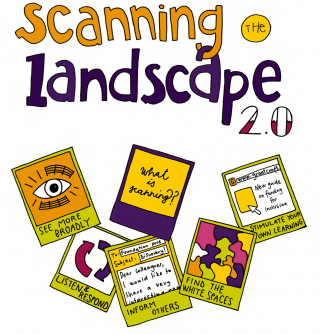Benefits and Challenges of Transparency
1. Behind Closed Doors: Sharing Grantee Data & Processes
Benefits
- Grantees and applicants are key partners in the work of foundations.
- Providing this information is a relatively straightforward task.
- Making these processes easily available provides immediate payoffs for grantees and foundation staff. It saves both valuable time and energy.
Challenges
- Taking the time and dedicating the resources to creating clear guidelines can be difficult in the face of competing priorities, though people interviewed said that the investment saves time in the end through more on-target applications.
- Publishing data on grants does not always include the context or reasoning for making grants, which can lead to misinterpretations about the foundation’s work. Foundations can address that challenge by providing a brief context in connection with the grants data they publish.
- Foundations do not have many widely-adopted standards for sharing even the most basic information—especially across countries.
- Determining how close to real time foundations should publish grants data and implementing good processes for maintaining those updates can be tricky.
2. Is the Needle Moving? Sharing Performance Assessments
Benefits
- Helps other foundations as well as grantees learn from the results of often large investments.
- Opens the door to dialogue with other foundations, donors, and grantees to build on the knowledge and to collaborate or fund future efforts.
- Assists in demonstrating trust and credibility as a partner to nonprofits, the government, and business sectors.
Challenges
- It can be difficult for foundation staff to embrace the idea of admitting failure or flaws, both for themselves and out of fear of hurting the nonprofits they fund. Failure is a loaded word and means different things to different people. But the idea of publicly admitting that a large-scale initiative did not work as planned is a daunting proposition, no matter what word is used to describe it.
- Not every evaluation and assessment contains enough useful information to be shared publicly, which means that foundation staff must spend time sorting through such reports to choose the ones that are most valuable to disseminate.
- Simply sharing assessments is not enough to meet the goals of a transparent organization; long, dense evaluations may never be read, even if they are posted on a foundation’s web site.
3. Improving Relationships: Strengthening Engagement with Grantees and Other Stakeholders
Benefits
- Nonprofit organizations are generally the primary vehichles through which foundations make an impact. Improving transparency and participation leads to dialogue, which allows funders to play a stronger supporting role at all stages (planning, implementation, and post-grant).
- Foundation program staff and nonprofit staff have a set of skills and knowledge that are often complementary. Establishing ongoing ways to share their knowledge can lead to greater synergies and prevent repetitive mistakes.
- Nonprofit organizations working on similar issues that rarely talk to one another learn of one another’s work and begin collaborating, which may lead to accelerated or more lasting, systemic change.
Challenges
- Dialogue and engagement can be difficult because of the power dynamic between foundations and nonprofits.
- Not all nonprofit organizations are receptive to hearing about alternative approaches used by similar organizations because they feel that the context of their own work is unique.
- Greater engagement with grantees leads to closer relationships, which then can make exiting the funding relationship more difficult. While these conversations can be tough, funders say the most effective way to broach them is to be as transparent as possible about reasoning and decision-making.
4. Peers Helping Peers: Improving the Practice of Philanthropy
Benefits
- Prevents foundations from reinventing the wheel by learning what other funders are supporting in similar areas.
- Provides opportunities for foundations to meet, share knowledge, and potentially collaborate.
- Helps foundations working in similar areas develop a shared understanding and metrics for grantees, which saves nonprofits both time and energy.
- Contributes to a more transparent sector by making it easy for interested groups to learn about foundation work in one place.
Challenges
- Shared agreement among foundations on metrics such as common reporting standards can be difficult because each funder has long-standing approaches and may be reluctant to make changes.
- Letting go of long-standing copyright practices can be difficult for foundations that believe they are protecting not only their work but that of their grantees.
5. Communicating Well
Benefits
- People access information in different ways.
- Providing a variety of paths through which to communicate messages increases the reach and strength of a foundation’s transparency.
- Some mediums lend themselves to informality and a human voice, which builds trust and understanding that the stilted jargon of long research reports and calls for proposals do not.
Challenges
- Social media can be seen as an easy way to be transparent, but if foundations use it only as a one-way broadcast mechanism, they are not taking full advantage of its ability to engage with others in dialogue and conversation.
- Communicating through social media does not work as well if done in a highly centralized “foundation voice,” as is observed often in traditional forms of communication, because it runs counter to purpose of these avenues, which encourage a more informal, interactive, and human voice.
- Mediums that allow for public comment and dialogue require people to make themselves vulnerable. The nature of these mediums removes a wall between the content author and others, which can create open channels for criticism.
- Simply making information or a commenting function available does not mean that people want it.
Takeaways are critical, bite-sized resources either excerpted from our guides or written by Candid Learning for Funders using the guide's research data or themes post-publication. Attribution is given if the takeaway is a quotation.
This takeaway was derived from Opening Up.


